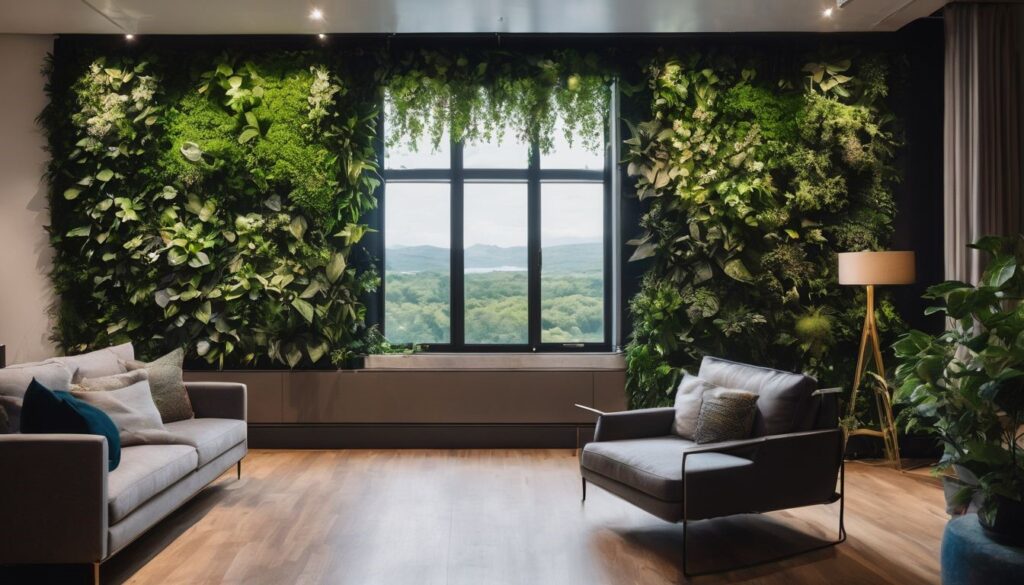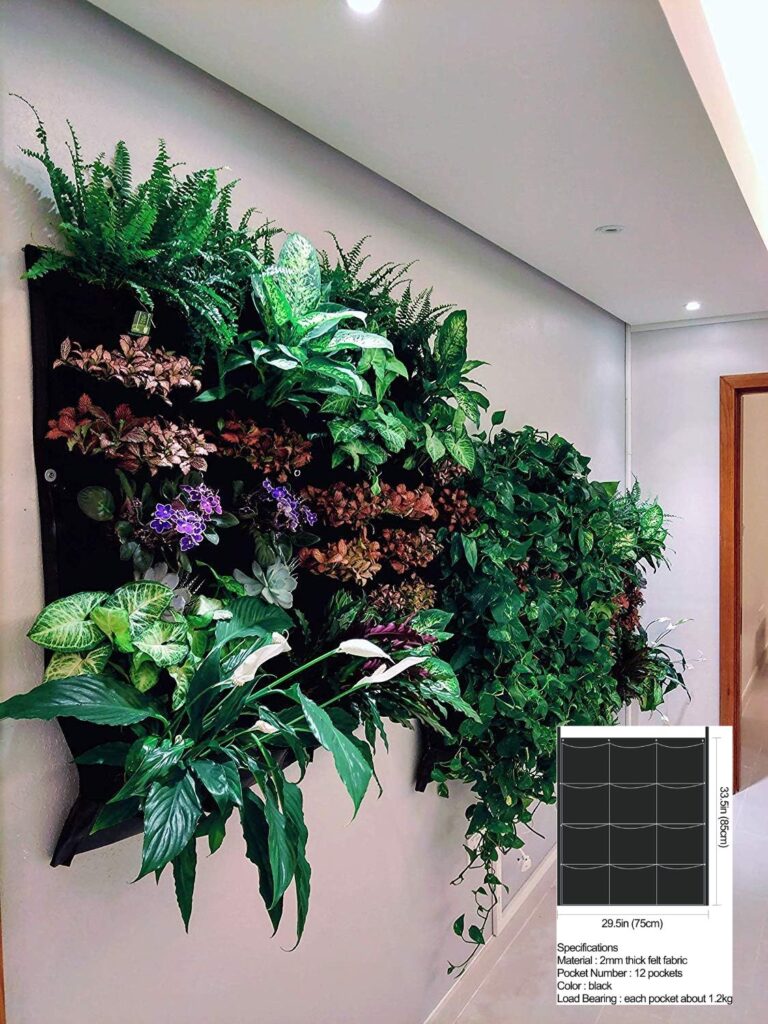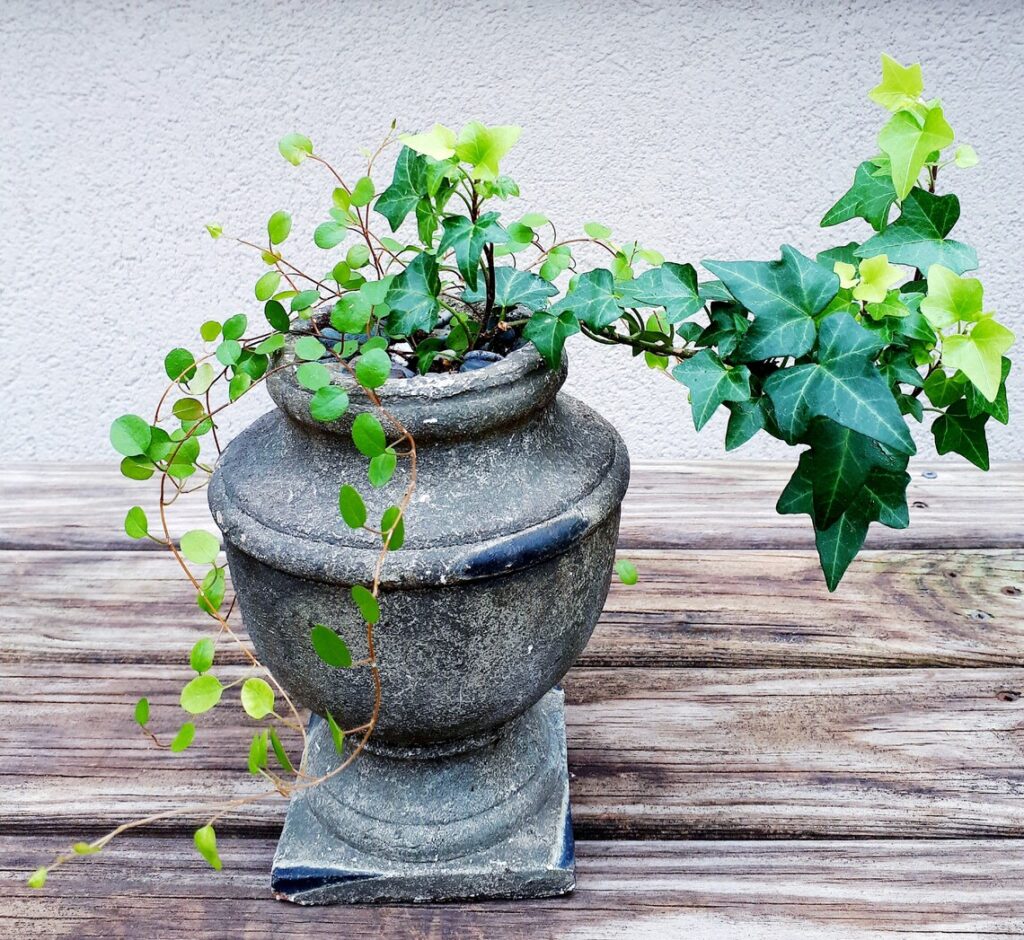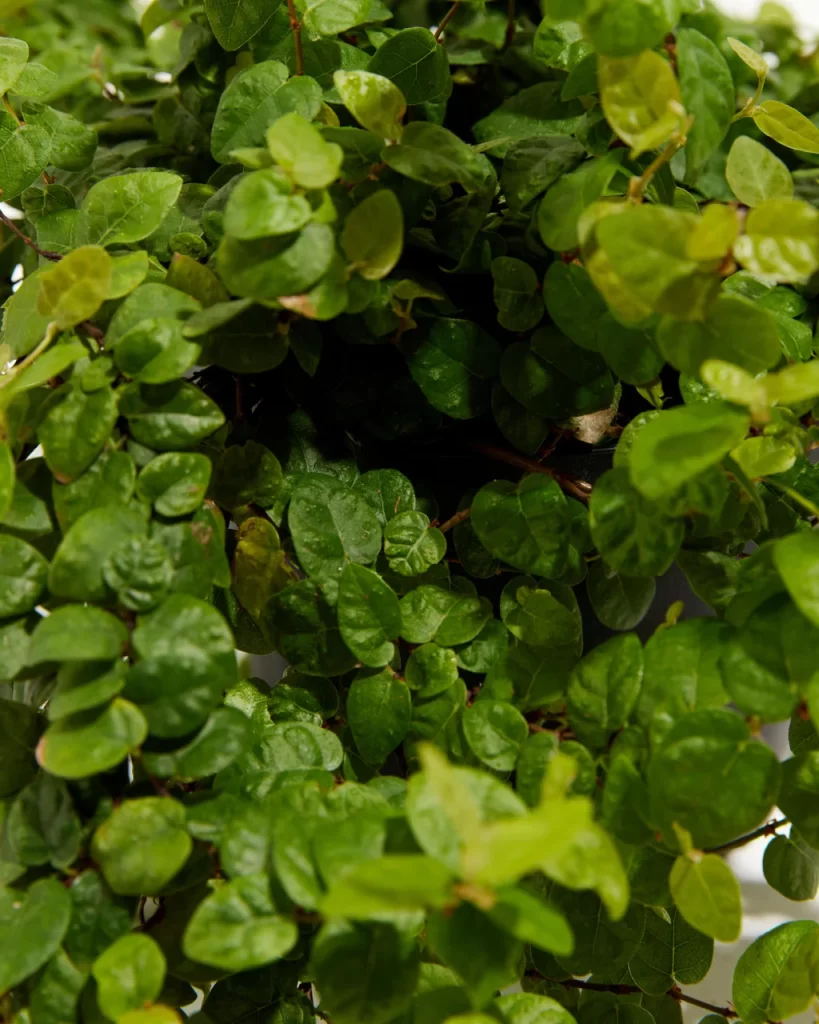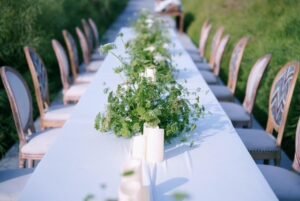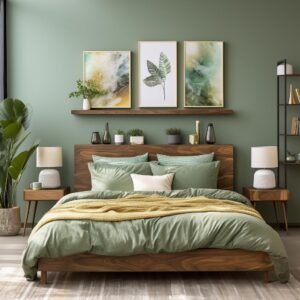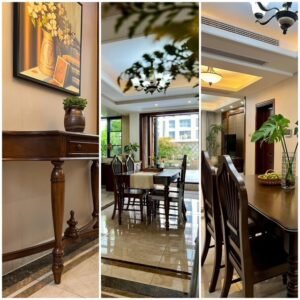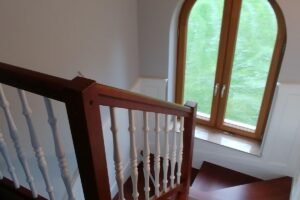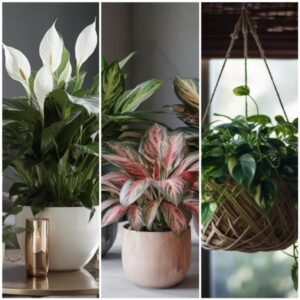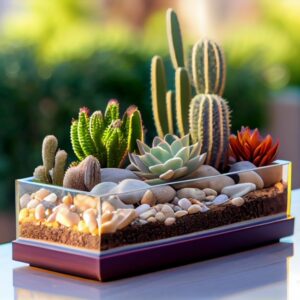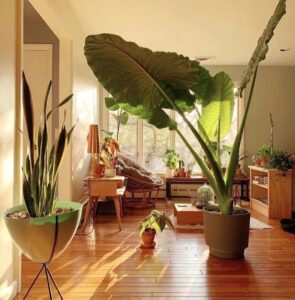Table of Contents
Do you feel like your indoor space is lacking some greenery? Vertical gardens, or “living walls,” are the latest trend in indoor plant decoration. This article will guide you through creating your living wall with vibrant indoor vining plants for a tranquil indoor oasis.
Read on to transform your home into an urban jungle!
What is a Living Wall?
A living wall is a vertical garden that utilizes indoor vining plants to create a lush and vibrant display. There are different types of living walls, including panel systems, felt systems, trellis systems, and container systems.
Types of Living Walls to Try at Home
Living walls come in different forms. You can try these at home:
- Panel Systems: This is a giant flat board that holds plants. It can be set up inside or outside the house.
- Felt Systems: These are sheets of felt put on a wall. Plants grow in pockets made into the felt.
- Trellis Systems: This is like a fence or gate for plants to grow on. It’s great for vining plants.
- Container Systems: Plants grow in small pots or containers stuck to the wall.
Panel Systems
Panel systems are a popular option for creating living walls. These systems consist of panels with pockets or slots to hold the plants. The panels can be attached to a wall or hung like artwork.
One of the advantages of panel systems is their versatility – they can be customized to fit any space and design style. Some panel systems even have built-in irrigation, making it easier to water your plants.
With a panel system, you can enjoy the beauty of a living wall without taking up too much space.
Felt Systems
Felt systems are a popular choice for creating living walls. These systems use layers of felt material to hold the plants in place and provide them with water and nutrients. Felt systems can be easily installed on indoor and outdoor walls, making them a versatile option for homeowners.
The felt acts as a growing medium for the plants, allowing their roots to take hold and grow. This system is also lightweight, making it suitable for vertical spaces where weight restrictions may apply.
With a felt system, you can create a beautiful green wall filled with vining plants to add beauty and freshness to your home or garden.
Trellis Systems
A trellis system is one type of living wall you can try at home. It involves using a support structure, like a winding wall trellis, for your vining plants to grow on. Trellises can be made from various materials, such as wood or metal, providing vertical space for plants to climb and spread out.
The trellis system helps create an organized and visually appealing living wall that adds beauty to any indoor or outdoor space. With a trellis system, you can enjoy the benefits of having green walls while uniquely showcasing your favorite vining plants.
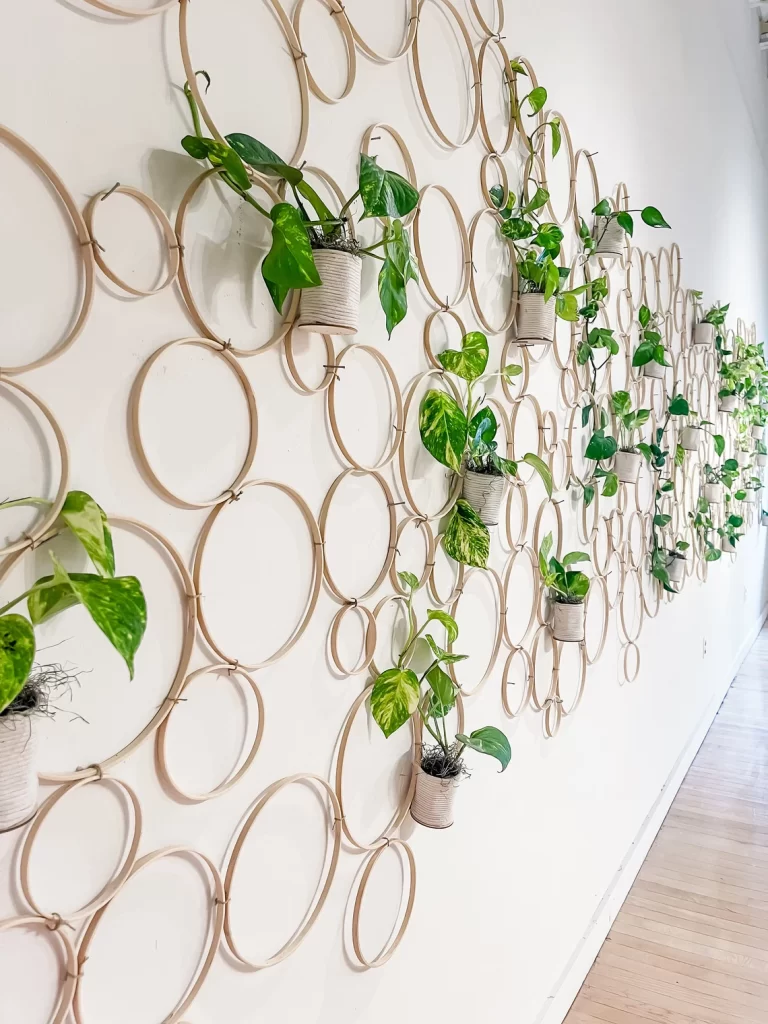
Bamboo Circle Trellis for Indoor Plants
Container Systems
Container systems are an excellent option for creating a living wall at home. These systems involve using individual containers or pots to hold the plants that make up your vertical garden.
With container systems, you have more plant selection and arrangement flexibility. You can easily move or replace plants as needed, making maintenance easier. Container systems also allow you to experiment with different colors and textures by mixing and matching various plant species.
Whether you have limited space or want to add a touch of greenery indoors, container systems are an efficient and versatile choice for creating your living wall.
Pocket Indoor Waterproof Vertical Living Wall Planter
Benefits and Tips for Creating a Living Wall
Creating a living wall in your home has numerous benefits, including improved air quality and increased visual appeal. When creating your living wall, choose a location that provides ample light for the plants and select vining plants suited for indoor growing.
Regular maintenance, such as watering and pruning, is crucial to ensure the health and longevity of your living wall.
Benefits of Living Walls
Living walls have several benefits for homeowners and green thumbs:
- They improve air quality by reducing pollutants and increasing oxygen levels.
- Living walls help to regulate indoor humidity, creating a more comfortable environment.
- They act as natural sound barriers, reducing noise pollution.
- Living walls provide insulation, helping to reduce energy consumption and lower heating and cooling costs.
- They create a calming and soothing atmosphere, promoting mental well-being and reducing stress.
- Living walls can increase property value and enhance the aesthetic appeal of any space.
- They serve as natural habitats for beneficial insects and birds, contributing to biodiversity.
- Living walls allow you to grow your herbs, vegetables, or flowers, supplying fresh produce.
- They use vertical spaces efficiently, ideal for small homes or apartments with limited floor space.
- Living walls offer an opportunity to connect with nature indoors, even in urban environments.
Location Requirements
To create a living wall, it’s important to consider the location where you want to install it. Indoor vertical gardens should ideally be placed near large windows or gain access to sunlight through skylights.
This is because most plants need ample light to grow and thrive. So, choose a spot in your home with plenty of natural light. Additionally, ensure the location has enough space for your living wall system and allow easy access for watering and maintenance.
By selecting the right location, you can ensure that your indoor vining plants will flourish and add a touch of greenery to your space.
Plant Selection
When selecting plants for your living wall, choosing ones that work well together and are suitable for the environment is important suitable for the environment. Consider factors such as light requirements, water needs, and growth habits.
Some popular choices for indoor living walls include pothos, ivy, philodendrons, and spider plants. These plants are low-maintenance and can tolerate different light conditions. Consider using herbs like basil or thyme for a functional and aromatic living wall if you have a sunny location.
Indoor Angel Vine
Basic Maintenance
Maintaining a living wall is essential to keep it healthy and vibrant. Regular watering is necessary, as the plants in the living wall need consistent moisture. You can use a watering can or a hose with a gentle spray attachment to water the plants evenly.
It’s important not to overwater, as this can lead to root rot. Fertilizing your living wall every few weeks will provide the necessary nutrients for plant growth. Pruning dead or yellowing leaves will help maintain your living wall’s overall health and appearance.
Finally, be mindful of pests and diseases that may affect your plants. Inspect them regularly for any signs of infestation or illness and take appropriate action if needed.
How to Create a Living Wall
Discover different display options, learn how to allocate ample light, select the right system, and pick the perfect plants for your living wall. Ready to get started on creating your very own vertical garden? Read more here!
Display Options
There are several options to choose from when displaying your living wall. You can use panel, felt, trellis, felt systems, trellis systems, or container systems. Panel systems consist of pre-built panels that you can attach to any wall and insert the plants into.
Felt systems involve mounting a fabric pocket onto the wall and planting the vining plants directly. Trellis systems use a framework of wires or wooden slats for the plants to climb on.
Container systems involve using individual pots or containers mounted onto the wall for each plant. Each option offers unique looks and benefits, so you can find one that suits your style and space!
Allocating Ample Light
It is vital to allocate ample light to ensure the healthy growth of your indoor vining plants in a living wall. Place your vertical garden near large windows or skylights so that the plants can receive sufficient sunlight.
This will help them thrive and maintain their lush green appearance. Remember, different plants have different light requirements, so choose ones suitable for your space’s available lighting conditions.
With proper light allocation, you can enjoy aYou can enjoy a vibrant and flourishing living wall in your home with proper light allocation in your home.
Selecting a System
To create a living wall, you must choose the right installation system. You can try panel, felt, trellis, and container systems.
When selecting a system for your living wall, consider available space, sunlight exposure, maintenance requirements, and plant compatibility. Some systems may be better suited for indoor spaces with limited natural light, while others may require more sunlight exposure.
Additionally, pay attention to how easily accessible the system is for watering and maintaining the plants.
Picking Perfect Plants for Your Living Wall
When choosing plants for your living wall, it’s essential to consider their compatibility and growth habits. Select plants with similar watering and lighting requirements to ensure they thrive together.
Some popular choices for living walls include pothos, philodendron plants, spider plants, English ivy, and creeping figs. These vining plants are low-maintenance and can tolerate varying light conditions.
It’s also a good idea to mix different textures and colors mixing different textures and colors for an aesthetically pleasing display is also a good idea. Remember to regularly prune and care for your living wall plants to keep them healthy and vibrant.
Climbing Fig
Conclusion
Creating a living wall with indoor vining plants is a great way to bring the beauty of nature into your home. By selecting the right system and plants and ensuring they have enough light, you can create a stunning vertical garden that adds style and greenery to any space.
So go ahead, get creative, and start enjoying the benefits

